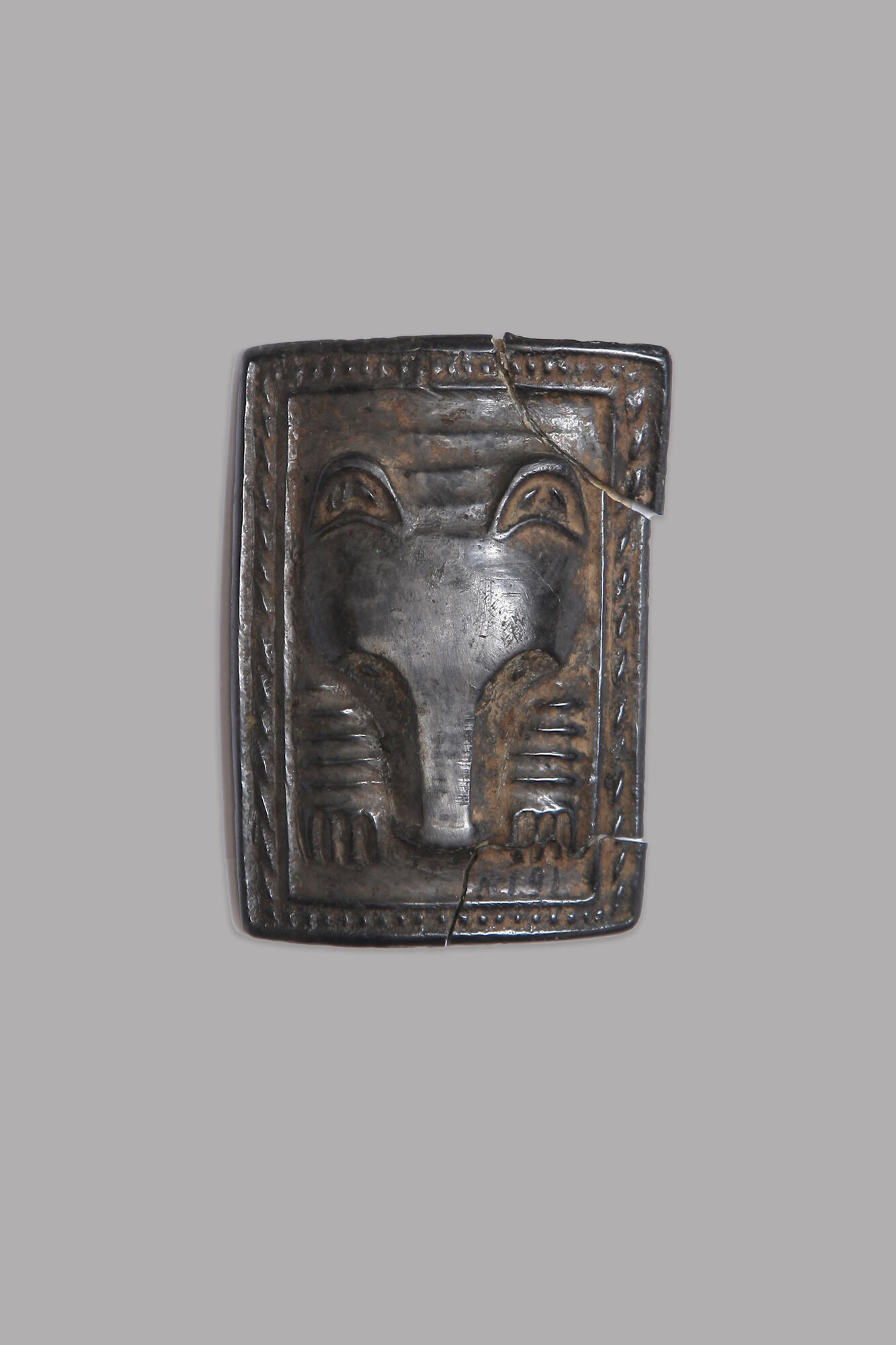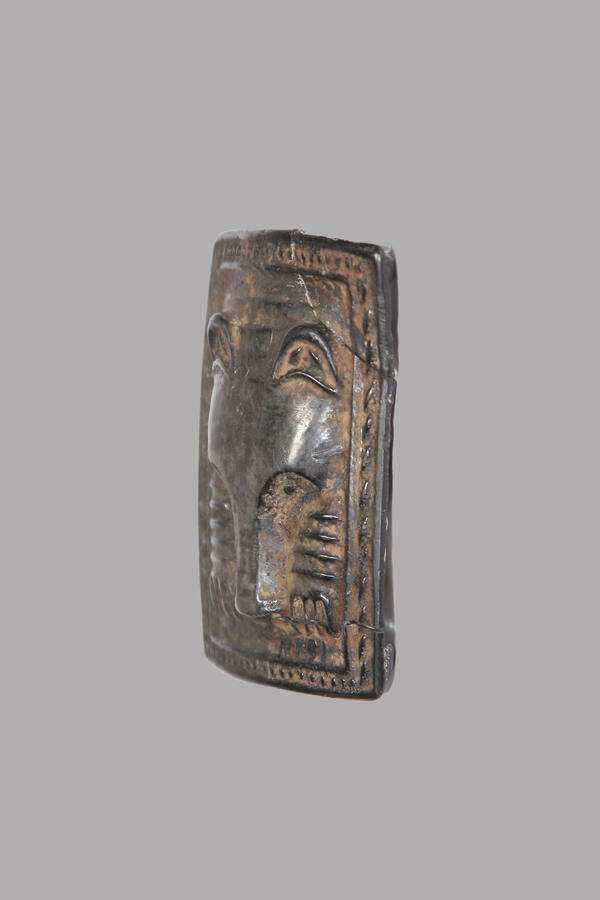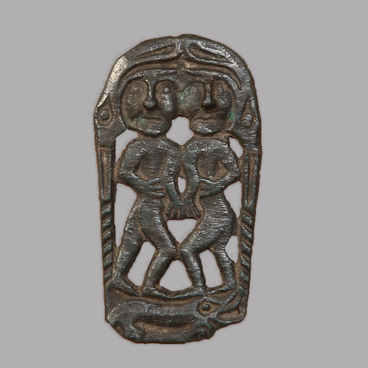The plaque with an image of a bear is the emblem of the Perm animal style that is used in national symbols. The figure of a bear is featured on ancient maps of the Perm Governorate and on the modern coat of arms of the city of Perm, and there is a monument to this animal in the center of the city. The bear is one of the most ancient and popular cultural archetypes since the Paleolithic era. According to Ural legends, the bear was the son of the supreme god, but disobeyed him, came down to the people and was killed. The bear’s spirit was revived in ritual ceremonies and returned to his father in heaven.
The Komi-Permyaks had a cult of a bear — “osh”. One of the epic heroes of this people was called Kudym-Osh, or Bear from the mouth of the river Kuva. He was a legendary warrior possessing superhuman strength. He wore an amulet of a bear on his chest and was invincible, he rode his elk and could cure any wound while clinging to the ground. The bear in the Urals was considered a creature similar to man, but much stronger, so they called him the “master”. The bear as the master of the forest was believed to be able to influence the outcome of the hunt. Among the Komi-Permyak ownership marks were images of “big bear”, “little bear”, “bear’s ear”.
The plaque with a bear was discovered in the 1930s in the village of Puksib in the Komi-Permyak National Okrug. The bear’s head is depicted most realistically: the muzzle, eyes, ears, and claws are clearly distinguished. The perimeter decorative pattern serves the main purpose of emphasizing the figure of the bear and limiting it in space. At pagan bear festivals, the hide of a dead bear was laid in such a way that its head was between its paws. It was in this sacrificial pose that the ancient masters of the Perm animal style most often depicted bears.
The Perm animal style is a special art of repoussage that has existed for 12 centuries in northeastern Europe and Western Siberia. It evolved from the beliefs and observations of hunters, their attempts to explain the laws of nature and life using the idea of animal spirits. Bronze amulets, pendants and figurines with images of moose, lizards, birds, horses and people were widespread both in spiritual and everyday life.
The Komi-Permyaks had a cult of a bear — “osh”. One of the epic heroes of this people was called Kudym-Osh, or Bear from the mouth of the river Kuva. He was a legendary warrior possessing superhuman strength. He wore an amulet of a bear on his chest and was invincible, he rode his elk and could cure any wound while clinging to the ground. The bear in the Urals was considered a creature similar to man, but much stronger, so they called him the “master”. The bear as the master of the forest was believed to be able to influence the outcome of the hunt. Among the Komi-Permyak ownership marks were images of “big bear”, “little bear”, “bear’s ear”.
The plaque with a bear was discovered in the 1930s in the village of Puksib in the Komi-Permyak National Okrug. The bear’s head is depicted most realistically: the muzzle, eyes, ears, and claws are clearly distinguished. The perimeter decorative pattern serves the main purpose of emphasizing the figure of the bear and limiting it in space. At pagan bear festivals, the hide of a dead bear was laid in such a way that its head was between its paws. It was in this sacrificial pose that the ancient masters of the Perm animal style most often depicted bears.
The Perm animal style is a special art of repoussage that has existed for 12 centuries in northeastern Europe and Western Siberia. It evolved from the beliefs and observations of hunters, their attempts to explain the laws of nature and life using the idea of animal spirits. Bronze amulets, pendants and figurines with images of moose, lizards, birds, horses and people were widespread both in spiritual and everyday life.




